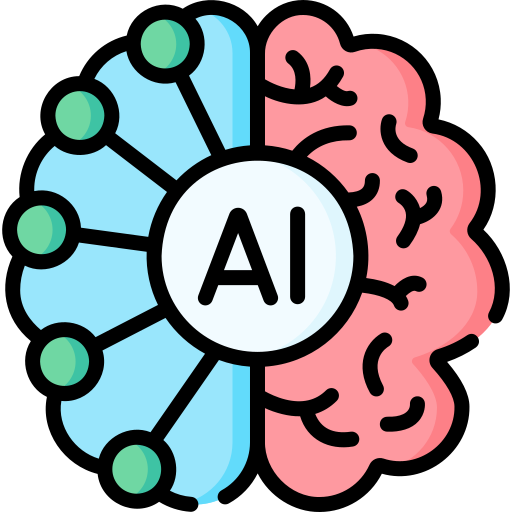AI and Automation: Revolutionizing the Future of Work and Business

 AI & Automation
AI & AutomationIntroduction
Artificial Intelligence (AI) and automation are reshaping industries at an unprecedented pace. From intelligent chatbots to self-driving cars, businesses and individuals are leveraging AI-powered automation to increase efficiency, reduce costs, and enhance customer experiences. But what does this mean for the future of work, business operations, and technology? In this blog, we will explore how AI and automation are revolutionizing different sectors, their benefits, challenges, and what the future holds.
Understanding AI and Automation
AI refers to the ability of machines and software to perform tasks that typically require human intelligence, such as problem-solving, decision-making, and language understanding. On the other hand, automation involves using technology to complete repetitive tasks with minimal human intervention. When AI and automation come together, they create intelligent systems that can learn, adapt, and optimize workflows without constant manual input.
Key Technologies Driving AI and Automation:
- Machine Learning (ML): AI models that learn from data and improve performance over time.
- Natural Language Processing (NLP): Enables machines to understand and generate human language (e.g., chatbots, voice assistants).
- Robotic Process Automation (RPA): Software bots that automate rule-based tasks in business operations.
- Computer Vision: AI’s ability to interpret visual data (e.g., facial recognition, medical imaging).
How AI and Automation are Transforming Industries
1. AI in Business and Customer Support
AI-powered chatbots and virtual assistants like ChatGPT and Google Bard are transforming customer service. Businesses now use AI-driven automation to handle queries, provide instant responses, and improve customer engagement 24/7.
- 🔹 Example: Companies like Amazon and Shopify use AI-powered chatbots for personalized shopping recommendations.
2. AI in Healthcare
AI-driven automation in healthcare is saving lives by improving diagnosis, automating administrative processes, and enhancing patient care.
- 🔹 Example: AI-powered medical imaging tools help doctors detect diseases like cancer at an early stage.
3. AI in Finance and Banking
Financial institutions use AI to detect fraud, automate trading, and provide personalized banking experiences. AI-powered risk assessment tools also help businesses make informed financial decisions.
- 🔹 Example: AI-powered robo-advisors like Betterment and Wealthfront provide automated investment management.
4. AI in Marketing and Digital Advertising
AI-driven marketing tools analyze user behavior and automate personalized ad targeting, content generation, and email marketing campaigns.
- 🔹 Example: Google and Facebook use AI algorithms to optimize ad placements based on user engagement.
5. AI in Manufacturing and Supply Chain Management
Automation in manufacturing enhances productivity, reduces human errors, and streamlines logistics. AI-powered robots are used in assembly lines, warehouses, and quality control.
- 🔹 Example: Tesla’s Gigafactories use AI-powered automation to build electric vehicles efficiently.
6. AI in E-Commerce and Retail
AI-powered recommendation engines help e-commerce businesses suggest products based on customer preferences and browsing history. Automated inventory management ensures products are restocked efficiently.
- 🔹 Example: Netflix uses AI-driven algorithms to recommend shows and movies based on user interests.
Benefits of AI and Automation
- ✅ Increased Efficiency: AI-powered automation reduces time spent on repetitive tasks, improving productivity.
- ✅ Cost Savings: Businesses save money by reducing labor costs and improving operational efficiency.
- ✅ Enhanced Accuracy: AI minimizes human errors, leading to better decision-making.
- ✅ Scalability: AI-driven automation allows businesses to scale operations quickly.
- ✅ Improved Customer Experience: AI chatbots and automation tools provide personalized and fast responses.
Challenges of AI and Automation
- 🔹 Job Displacement: AI replacing human jobs is a major concern, especially in repetitive task-based roles.
- 🔹 Data Privacy Risks: AI requires vast amounts of data, leading to privacy and security concerns.
- 🔹 High Implementation Costs: AI adoption requires significant investment in infrastructure and training.
- 🔹 Bias and Ethical Issues: AI systems can inherit biases from training data, leading to unfair decision-making.
The Future of AI and Automation
The AI revolution is just beginning. Future advancements will include:
- 🚀 Hyper-Automation: AI and automation working together to create fully autonomous business processes.
- 🚀 AI-Augmented Workforces: AI collaborating with humans rather than replacing them.
- 🚀 AI in Space Exploration: AI-powered robots assisting in space missions and planetary research.
- 🚀 AI in Smart Cities: Automation will optimize traffic management, energy consumption, and security.
Conclusion
AI and automation are transforming industries and shaping the future of work. While there are challenges, the benefits outweigh the risks, making AI an indispensable part of modern businesses. Organizations that embrace AI-driven automation will gain a competitive edge, enhance efficiency, and create innovative solutions for the future. Is your business ready for AI-powered automation? The time to integrate AI into your workflow is now! 🚀